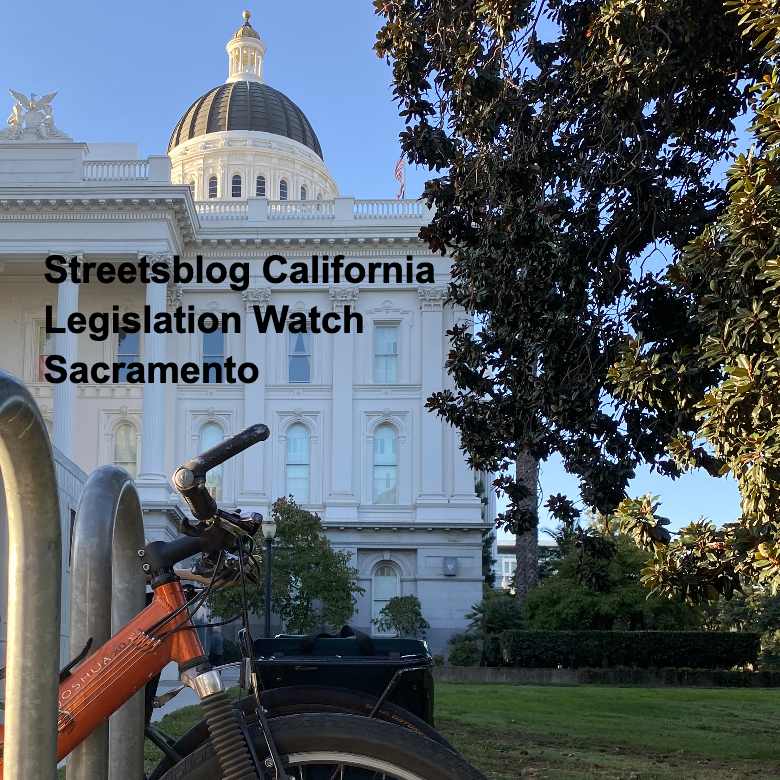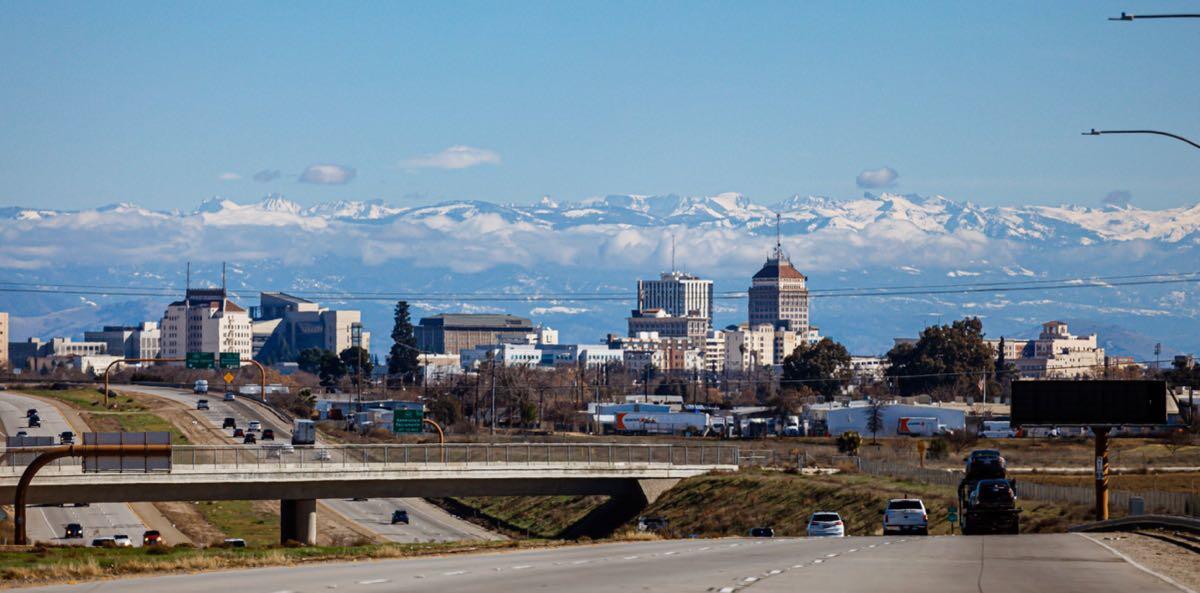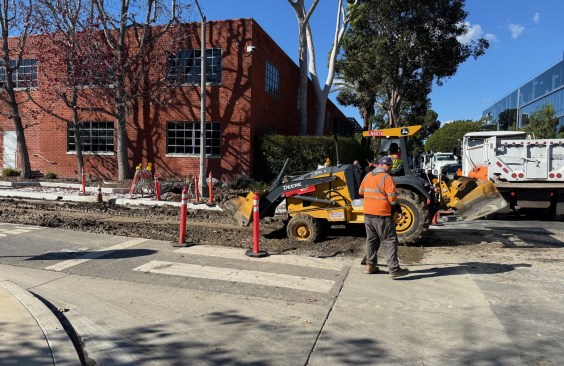At Tuesday's Senate Transportation Committee hearing, several bills relating to regulating autonomous vehicles were discussed and moved forward. These are not the only bills on AVs currently being considered by the legislature, but yesterday's discussions give an idea what lawmakers are concerned about - and of how the AV industry is using every argument it can come up with to squelch any regulations.
Getting Ahead of Driverless Trucks
So far, legislators have not been persuaded by the opposition. "I do not want to be driving my light vehicle over Hwy 152 today, with an 80,000-pound unoccupied AV coming the other way," said Committee Chair Dave Cortese during the discussion of A.B. 2286. Assemblymember Cecilia Aguiar-Curry's bill would require any company testing autonomous technology in large vehicles to have a driver in the vehicle.
The Department of Motor Vehicles does not yet allow heavy-duty AV trucks to operate in California, but they are getting close. Its current minimal regulations for light-duty AVs have some people worried and Assemblymember Aguiar-Curry proposed her bill to make sure the DMV doesn't get too lax.
"Nothing in this bill prevents companies from testing the technology," she said. "The bill affirmatively recognizes we should move forward with testing these vehicles. All this does is include the legislative branch in a more transparent [rule-making] process as AVs move towards full deployment." The bill includes a "trigger" that defines when a company's vehicles "would be able to go completely driverless, based on real data," she said.
"Unlike taxis, heavy-duty vehicles are much heavier, and they go faster on highways and present a much bigger danger to other users," she said. "The only reason to rush forward is to increase profits."
She said her bill "brings in necessary guardrails" because even the industry does not know when this technology will be ready.
Accordingly, the bill has no exact sunset date, which Chair Cortese noted is a problem. "An exit strategy needs to be clear," he said. "But if you're waiting for agency rule making to enable you to do anything, you're going to be waiting a long, long time, and since nobody else is writing rules about it, we're going to step in."
A similar bill by Aguiar-Curry was vetoed by Governor Newsom last year.
Communicating in an Emergency
Another bill gives an idea how the current lax DMV regulations are causing other problems. Assemblymember Phil Ting's A.B 1777 would give traffic enforcement and emergency responders some tools to use when faced with a driverless vehicle. San Francisco Fire Chief Darius Luttropp described the difficulties emergency personnel have experienced when AVs have come too close to emergency workers or gotten in their way. They can't just tell an unoccupied car to move, he said. "First responders have not been able to communicate with AVs. We have called the companies and been sent to voice mail, got no call back.... Compare this to being able to communicate with a human driver via a simple gesture or voice command," he said. "Drivers don't always respond or comply the way we want them to, but at least there's communication."
There's the added problem that under current law, it's not possible to cite an unoccupied vehicle. A. B. 1777 would "make sure that autonomous vehicles are treated like us vis-à-vis law enforcement," said Assemblymember Ting. His bill would allow police to write tickets to the manufacturer of the vehicle if there is no one in the car. It would also require AV manufacturers to maintain a dedicated emergency phone line for first responders that would have to be answered quickly, and to equip vehicles with a two-way communication device so emergency personnel can communicate with a remote human operator. It also authorizes the creation of emergency geofencing areas that AV manufacturers would be required to direct its fleet to leave or avoid. These requirements stem directly from experience with AVs already deployed in San Francisco.
The DMV's minimal rules for deployment include a requirement to submit a "law enforcement interaction plan" so that first responders know what to do in an emergency. This might sound reasonable - until you heard the industry representatives complain that the requirements of this bill and others discussed at the hearing "would increase burdens on the DMV and manufacturers." Should those burdens then be borne by emergency workers? By innocent bystanders?
The industry has complained to high heaven throughout these hearings about how these AV bills hold back innovation. This time they moaned that the legislature is trying to "short-circuit the existing rule-making process" by getting ahead of the DMV, and that the changes it is calling for are "onerous." Then, after complaining on behalf of the DMV, they said that anyway it's inappropriate for states to make AV regulations, since vehicle safety should be regulated at the federal level.
AV Incident Reporting
Another AV bill heard yesterday was A.B. 3061 from Assemblymember Matt Haney, the "Self-Driving Car Safety Act." This bill would create stronger rules on reporting AV incidents than the DMV currently has, "ensuring the level of transparency and accountability that's needed during both testing and deployment," according to Haney. The bill includes incident reporting requirements that align with federal rules and requires quarterly reports from AV manufacturers that summarize incident reports, vehicle miles traveled, unplanned stops, traffic violations, and accessible services.
Believe it or not, AV manufacturers that have a deployment permit from the DMV are currently not required to report data on collisions and vehicle malfunctions to the state. "AV companies are preparing to roll out in nearly every city in California, but data on which companies are safe and law-abiding and which aren't is being kept from the public and the state," wrote Assemblymember Haney in the bill's analysis.
School Zones, Electric Rail, Caltrans Project Data
In addition to the above bills, all of which passed, the Transportation Committee also discussed and passed:
A.B. 2583 from Assemblymember Marc Berman, which sets the speed limit near schools at 20 mph - the "prevailing" school zone speed limit in other states - and allows localities to add more specific language about when it applies. "The current 'when children are present' language is difficult to interpret and hard to enforce," said Berman.
A.B. 2503 from Assemblymember Alex Lee would create a CEQA exemption for electric rail projects on existing rail or highway rights-of-way. Lee used the long delays on the project to electrify Caltrain - which is finally ready to launch in September - as an example of how environmental review hampers environmental improvements. "Delays can dramatically increase costs, delay health and environmental benefits, and postpone the vital transition that needs to happen," he said. Meanwhile electric rail is not a new technology, and its use could enable faster service and reduce pollution on multiple rail corridors throughout the state.
A.B. 2086 from Assemblymember Pilar Shiavo would require Caltrans to put more information on its public-facing "dashboard" about how annual transportation project investments are advancing the vision and goals of the California Transportation Plan. It would also add a financial element to that plan. While local and regional transportation plans have to be "constrained" by funding availability, the CTP is "aspirational" in that it is not required to name or discuss funding sources for the projects in it. The CTP's vision and goals are supposed to inform those constrained plans, but there is no oversight to make sure that happens. This bill is a way to clarify where there are gaps between what is planned in the CTP and the projects that are being paid for and built.
Senator Roger Niello supports better access to data so that people could see the impact of shifting spending towards bike and transit lanes on "the free flowing of roads," which is important to him. "One of the troubling aspects to me is that [transportation] projects are prejudiced against any increase in VMT," he said (if only it were so!). The discussion gave him an opportunity to repeat something he likes to say as if it were fact: "An increase in VMT could reduce pollution if the roads are clogged, because stop-and-go traffic is significantly more polluting than traffic that is free-flowing, even if there are more cars."






